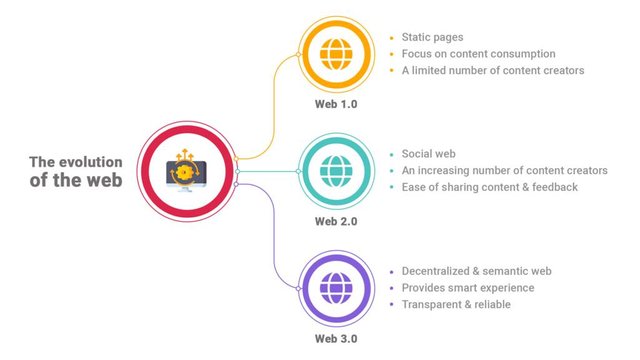The evolution of the web can be divided into three major phases: Web 1.0, Web 2.0, and Web 3.0.

Web 1.0, also known as the "static web," refers to the early days of the internet, from the 1990s to the early 2000s. During this period, websites were mostly static and provided one-way communication. Websites were created using HTML and could only display basic text and images. There was no interactivity, and users were passive consumers of information. Companies used the web primarily to provide information about their products and services, and there was little emphasis on user engagement or participation.
Web 2.0, also known as the "dynamic web," emerged in the mid-2000s and is characterized by the rise of social media, online collaboration, and user-generated content. The web became more interactive, allowing users to create and share content with each other. Websites became more dynamic, using technologies such as JavaScript, AJAX, and PHP to create interactive web applications. Social media platforms like Facebook, Twitter, and LinkedIn gained popularity, and new web-based tools emerged that enabled real-time collaboration and communication, such as Google Docs and Slack.
Web 3.0, also known as the "semantic web," is the current phase of the web's evolution and represents a shift towards intelligent, personalized, and context-aware applications. The goal of Web 3.0 is to make the web more intelligent and intuitive, enabling users to find and interact with information in more meaningful ways. It is characterized by the use of artificial intelligence, machine learning, and natural language processing to create smarter applications that can understand the meaning and context of data. The semantic web also aims to make data more easily shareable and interoperable across different applications and devices.
Overall, the evolution of the web has been marked by a steady progression towards greater interactivity, collaboration, and intelligence. As technology continues to evolve, it is likely that we will see further changes and advancements in the way we interact with the web.